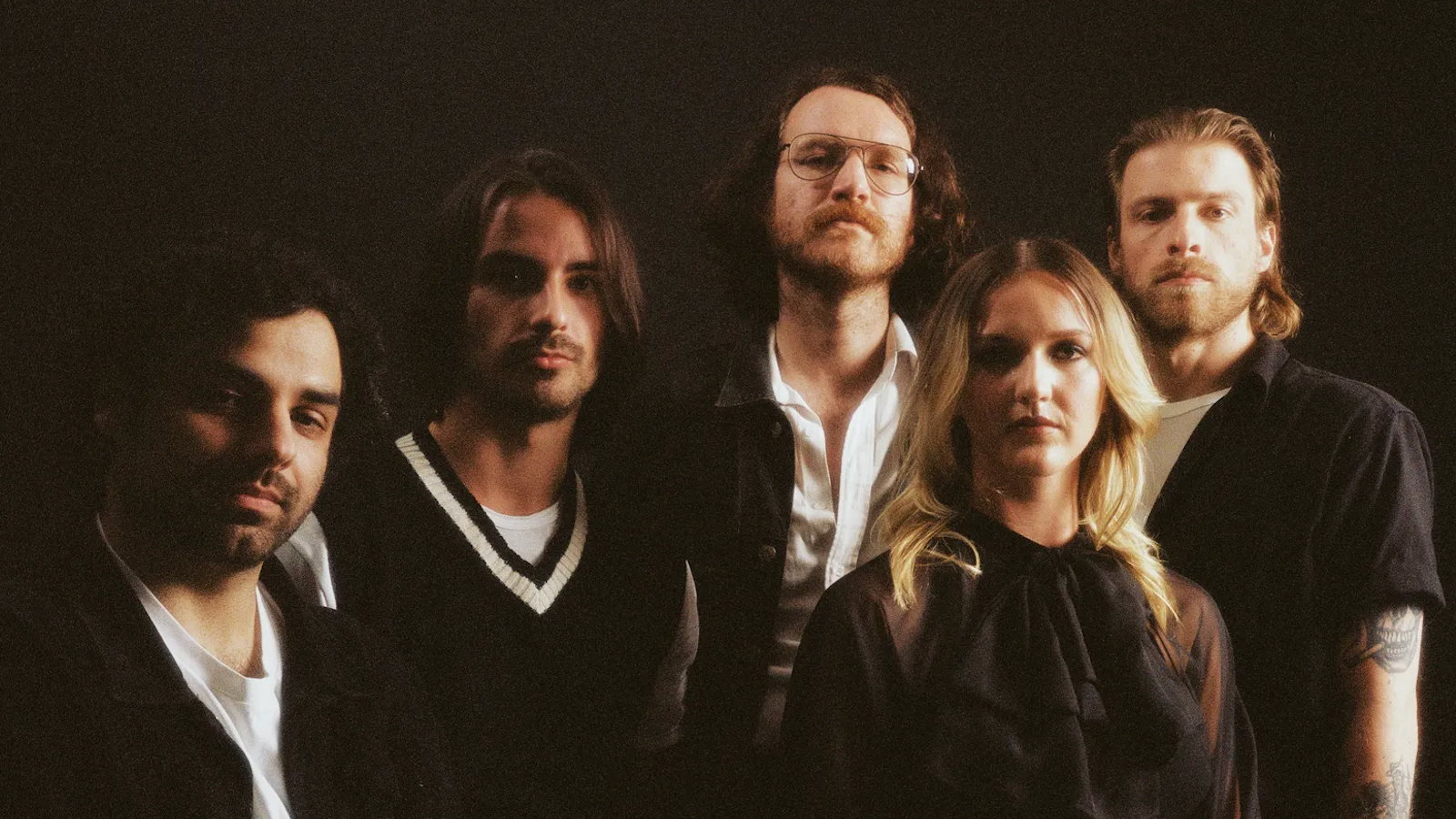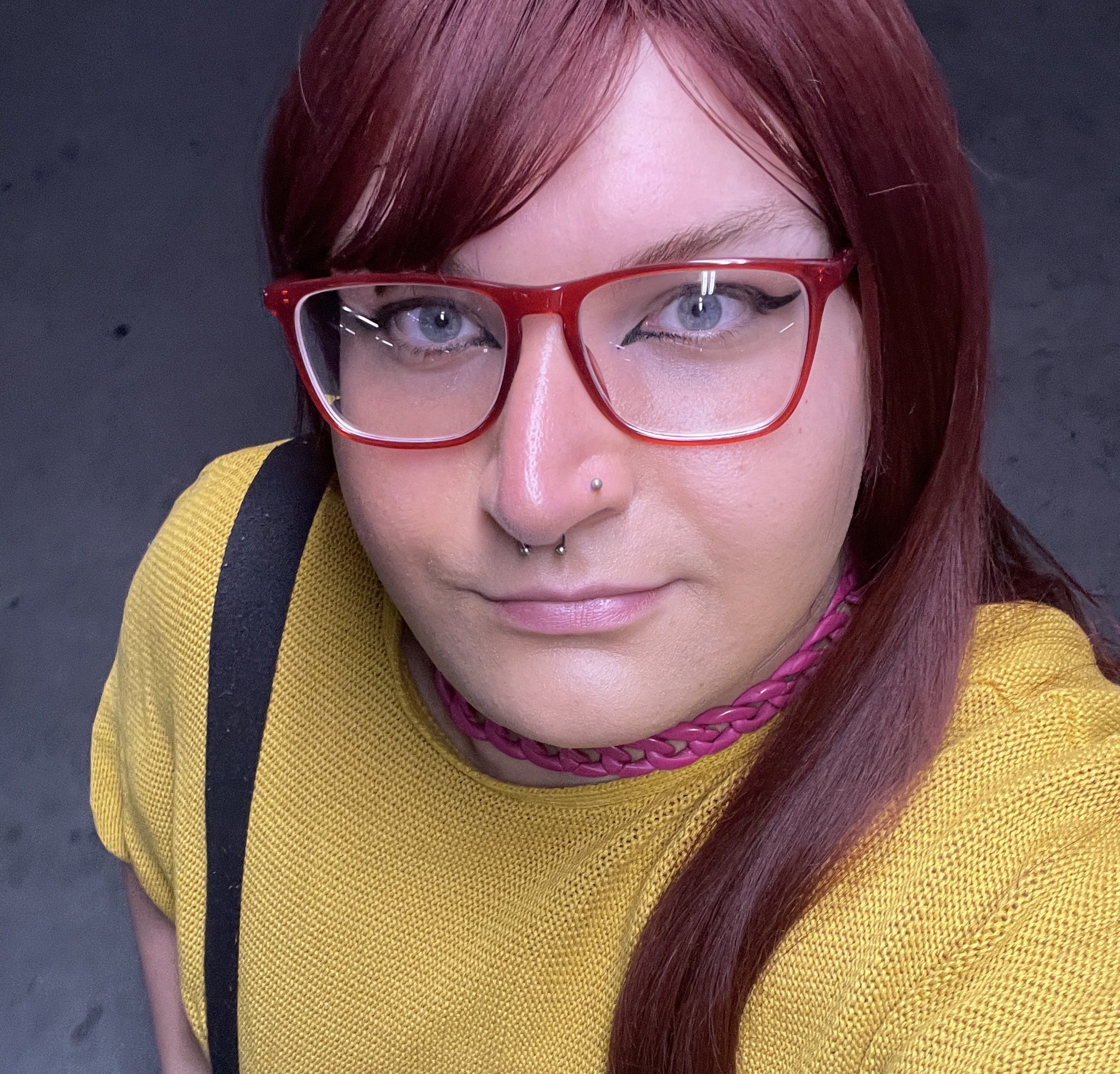Spotlight: Romero
The new album, Turn It On!, is out now

ROMERO
THEY HAIL FROM: Naarm/Melbourne, VIC
THE MEMBERS WE INTERVIEWED ARE: Adam Johnstone (guitar), Fergus Sinclair (guitar) and Justin Tawil (bass)
THEY SOUND LIKE: Post-2AM punk bar anthems
THEIR LATEST DROP IS: Turn It On! (LP out now via Cool Death / Feel It / EMI)
What’s your current go-to guitar?
Johnstone: My current go-to is my American Fender Jazzmaster AVRI ‘62. I’d played a couple of friends’ Jazzmasters in the studio and they always felt so smooth to me, plus I’d always loved that Jazzmaster tone. Previously I’d been playing a Fender Jaguar, which I also still love very much. When some friends pulled together to get me a new guitar for a birthday, I knew exactly what I was going for, and it’s been the guitar I pick up first ever since.
Sinclair: I’m a Strat man, currently rocking on a ‘95 Japanese make that comes in a slick ‘Egg Flip Big M’ yellow finish. The album, however, features a beautiful red ‘64 Custom Shop Strat that was played on our first three singles (‘Honey’, ‘Neapolitan’ and ‘Troublemaker’). A lot of my heroes were generally Les Paul or SG Junior players, but something never really felt right when I trialled those axes as a punky lil’ whippersnapper. I think what grabbed me the most was the Fender aesthetic and how cool they looked on people like Robbie Robertson and Albert Hammond Jr. As soon as i played that first A chord with the bridge pickup on a friend’s American Custom Shop, there was absolutely no turning back.
Tawil: I’m using a Mexican Fender Deluxe Active Jazz bass at the moment. I’d been using a Rickenbacker 4003 for the last five years or so, and while I love that bass to death, I was still looking to get something a bit smoother. The Jazz bass is perfect for that.
All the latest guitar news, interviews, lessons, reviews, deals and more, direct to your inbox!
How did you initially fall in love with the instrument?
Johnstone: I actually started on the piano first, but one night out in the country as a kid changed that. It was at a family get together – there were instruments being passed around and played, I picked up a guitar and played nothing but open strings, and I knew from there that I absolutely wanted to know more. I was hooked. My first guitar was a shitty $200 ‘magnum’ guitar that I picked up at the local music store I was getting lessons from at the time. I still have it with me, rarely played, sitting in my shed almost 20 years later.
Sinclair: As an impressionable and curious teenage grommet, there was absolutely nothing cooler than playing the axe. I fell in with a group of British invasion fanatics at school, and we would all obsess over both classic and modern UK indie bands like Joy Division, The Smiths and The Buzzcocks. I remember being totally blown away by the brooding melodicism and darker type of feel these bands had, and I spent many years trying to hone my own craft and feel.
After fingerpicking my way into the abyss, using a classic guitar that was gifted to me at age firth, my 18th birthday came with the promise of an upgrade. No word of a lie, there was a song that had a repeated vocal refrain of “destiny” playing in the shop when I locked eyes with a vintage wooden-varnish Squier Telecaster. The owner of this particular Guitar World, whilst on a phone call, still managed to sniff out my curiosity. He started clicking at his employees, as if to say, “We’ve got a hot one here fellas!” Needless to say, they certainly did.
Tawil: In high school, I ended up picking up bass to play in a band with my mates. I had one of those Affinity Series P basses that had the Jazz pickup as well, which was actually really sweet. We’d just do Green Day, Nirvana and The Hives covers, but it was songs like ‘Longview’ and ‘Hate To Say I Told You So’ that had all these cool bass moments, and just playing with my mates at that age really made me a lifer.
What inspires you as a player?
Johnstone: There’s a lot, and the list forever grows. Punk music was what first really excited my playing, and then when I was shown Dinosaur Jr, J Mascis’ playing completely blew me away. It was like I’d found the exact style and sound that resonated with me. His style has most definitely played a pivotal role in how I’ve grown as a guitarist. Then there’s bands like The Jesus And Mary Chain, who showed me that you can make really simple things sound insanely beautiful and catchy. Country and blues music also had a major impact on me, in terms of improvising and getting more feeling into my playing. My first guitar teacher would always spend the first ten minutes of our lesson doing theory, and then we’d spend the last 20 minutes just jamming to whatever blues song he’d have that week.
Sinclair: Two heavy hitters that absolutely floored me in my early days were Neil Young and Bowie’s layered production work on Iggy Pop’s Lust For Life record. Both were channelled on a subconscious and conscious level throughout our Turn It On! record. The combination of screech and melody in Neil Young’s solos was something that I was particularly enamoured with – it’s specifically most evident on the Zuma and Tonight’s The Night records. His influence is perhaps most evident on our song ‘Crossing Lines’, during the solo that happens in the middle there.
In rehearsal, I started playing these two-note chord combinations that came from what felt like nowhere. Adam turned to me and asked what the hell they were and where the hell they came from, and I couldn't put my finger on it either. It wasn't until we started tracking the album that our engineer Idge pointed out that it reminded him of something from Zuma, which absolutely blew my head off.
The Lust For Life influence came in the form of making sure that every solo or mini-riff blemish of mine in particular was tracked multiple times. The idea for these came from studying songs like ‘Tonight’, ‘Success’ and ‘Some Weird Sin’, which gave things such a brilliant little edge of excitement. In hindsight, Bowie might've been going for a ‘What Goes On’ vibe with that idea, but either way, the results are terrific. Honourable mention goes out to my man Phil Lynott and his rambunctious motley crew of rotating guitarists. ‘Fighting’ is possibly the GOAT, and you can hear Adam and I attempt to replicate that vibe on the title track from Turn It On!
Tawil: Cliff Burton was the man for me when I was in high school. All the insane sounds he pulled from a bit of distortion – and going nuts on a wah pedal – was jaw-dropping then, and honestly still is now. I think what I took from that, though, is that it’s important to remember to let your shit rock when you’re writing your bass parts. Keeping things simple has its place, but if you’re holding back and not trying out whatever ideas pop into your head, you end up stunting your own growth.
Are you much of a gear nerd?
Johnstone: I’m not a huge gear nerd, but I know what I like when I hear it. My favourite and most used pedal, which supplies that basis to almost all of my sound, is the Analog Man Prince Of tone. I also finally got around to getting a Fender Twin Reverb and I’m loving that, too – if you want to build pedals on the best clean tone, it’s perfect. Before that, I’d always been a Marshall man.
Sinclair: Not really, to be perfectly honest. The only pedal I’ve ever successfully sought out was a 1980s Boss Chorus CE-3, whilst I was in the midst of a gothic/post-punk phase. That thing is an absolute beast and has served me very well in my other projects (EYSØRES and Laughing Gear), but I mainly just really enjoy the Electro-Harmonix East River Drive on a Stratocaster’s dirty bridge tone. I’m also a massive advocate for the versatility of the Mooer Blues Mood overdrive pedal, a critical piece of many puzzles whilst recording Turn It On! I’ve also always enjoyed playing into AC-30s.
Do you have any ‘white whales’?
Johnstone: I’ve always wanted to get my hands on a proper vintage Jag or Jazzmaster from the ‘60s. Shame it'll cost your liver and kidneys to get.
Sinclair: Adam and I obsessed over this 12-string Rickenbacker 360 that we were playing around with in the studio. We did a couple of takes with it when we were tracking ‘Petals’ and I think it took nearly two days for Idge to convince Adam to do it clean. It was absolutely gorgeous, and would surely give us endless years of pure enjoyment. I would love to get MY hands on a Red EKO Sparkle-Pop one day, too. There some amazing live videos of Charlie Megira getting real Elvis-y over a crazy-good rendition of a Television Personalities staple.
What would your signature model look like?
Johnstone: I’m not really a specs nerd either, but probably some kind of Fender Jaguar/Jazzmaster hybrid, combining the grit of the Jag and smoothness of the Jazz. But I’m honestly happy with what I’m playing right now.
Sinclair: Some type of variation on a Mustang, perhaps based on look and feel. I don’t know if I’d change up the specs too much, but I would definitely print a glossy ‘THANKS’ on the back of every issue à la Jimmie Rogers.
If you could jam with any guitarist in the world (dead or alive)…
Johnstone: Alive, it would have to be either Keith Richards or J Mascis. I’d play ‘Happy’ with Keith and jam something heavy with J. Dead, it would be someone like Blind Willie Johnson or Mississippi John Hurt, and I’d just take in their incredible fingerpicking styles, because it’s something that I certainly lack in.
Sinclair: It would've been pretty cool to switch rhythm and lead with Ron Asheton back in ‘69. Or have been a special guest on The Last Waltz where Levon Helm and I would trade vocals on the verses to come in big for the chorus along with The Staples.
Tawil: It’s Jamerson – easy call. I think everyone who’s ever picked up a bass covets his playing style in one way or another, and the way he dominates and dictates songs was so special. I’d probably get him to play all the songs on What’s Going On that they had Bob Babbitt play on instead, just to see how much further he could have pushed those songs. Babbitt’s lines are great, but the ebbs and flows that come with Jamerson’s improv style would be incredible to hear on those tracks.

Ellie Robinson is an Australian writer, editor and dog enthusiast with a keen ear for pop-rock and a keen tongue for actual Pop Rocks. Her bylines include music rag staples like NME, BLUNT, Mixdown and, of course, Australian Guitar (where she also serves as Editor-at-Large), but also less expected fare like TV Soap and Snowboarding Australia. Her go-to guitar is a Fender Player Tele, which, controversially, she only picked up after she'd joined the team at Australian Guitar. Before then, Ellie was a keyboardist – thankfully, the AG crew helped her see the light…

